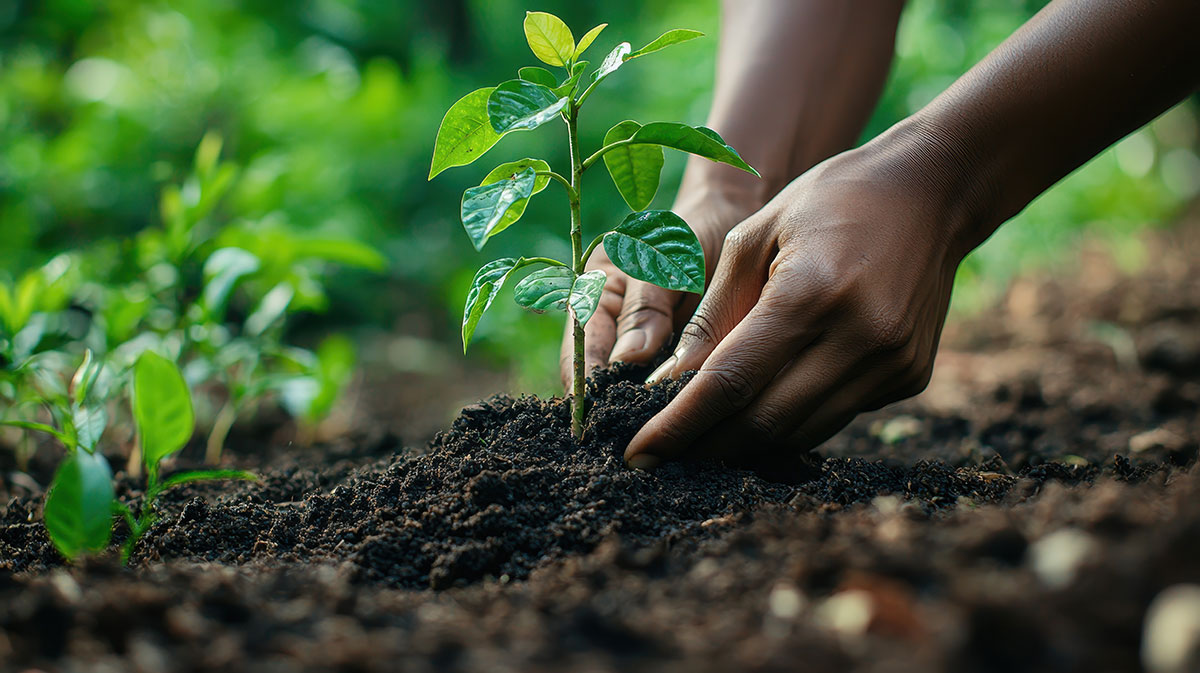Brooklyn is alive with sound. From the moment I wake up, I’m greeted by honking horns, subway rumbles, dogs barking, and neighbors calling across the street. Even when I’m inside, there’s always a low hum of city life—music drifting through the walls, sirens in the distance, the buzz of technology. Noise feels like the default.
That’s why my garden has become so precious to me. It’s not completely silent—there are birds, wind, and sometimes the laughter of children nearby—but it’s a different kind of sound. It’s gentle. It leaves room for breath. And when I sit with my hands in the soil, I discover something even deeper: a silence that isn’t empty, but full.
Rediscovering Quiet
I used to think silence meant the absence of sound. But over time, I’ve learned it’s more about the quality of attention. When I sit in my garden, I’m not just blocking out city noise. I’m tuning into something else—something softer, older, and wiser.
The soil itself carries a kind of silence. When I kneel down, place my hands in the dirt, and pause, I can feel it. It’s the quiet patience of roots growing slowly underground. It’s the stillness of seeds waiting for the right conditions to sprout. It’s a silence that holds life, not emptiness.
The Noise We Carry
The outside world is noisy, but so is the inside of our minds. When I first sit down to meditate or garden, my thoughts often chatter louder than the traffic outside. Did I pay that bill? What should I make for dinner? Why did I say that thing yesterday?
This inner noise is part of being human, but I’ve realized that nature has a way of softening it. When I stay still long enough—listening to the rustle of leaves, noticing the way the soil feels cool in my hands—my thoughts begin to settle. The soil doesn’t hurry me. It doesn’t demand productivity. It simply offers quiet presence, and slowly, I meet it there.
Listening Differently
Listening to soil might sound strange, but to me it’s about shifting the way I pay attention. Instead of waiting for obvious sounds, I open myself to subtler forms of communication.
When I water my plants, I listen for how quickly the soil absorbs the water—is it thirsty, or still damp from yesterday? When I transplant seedlings, I listen with my hands, feeling if the roots are ready to stretch. When I sit quietly, I listen with my whole body, noticing how calm rises as I ground myself in the earth.
It’s not about hearing words. It’s about sensing connection. The soil teaches me that listening doesn’t always require sound—it requires presence.
The Healing Power of Stillness
There are days when the noise of the world feels overwhelming. News headlines, social media updates, endless notifications—it can all leave me feeling scattered and tense. That’s when I go to the garden and let the soil remind me of stillness.
The act of touching the earth has a way of grounding me, literally and emotionally. There’s research that shows soil carries microbes that boost our mood, but beyond science, I feel it in my heart. When I dig, plant, or simply sit close to the earth, I remember that life doesn’t have to move at the pace of a screen. Growth is quiet. Healing is quiet. The soil whispers: slow down, breathe, trust.
Silence as Resistance
In a city and a culture that glorifies busyness, choosing silence feels almost radical. We’re encouraged to always be doing, producing, and consuming. But the soil reminds me that being is enough.
By taking time to sit in silence with nature, I resist the pull of constant noise. I resist the idea that my worth depends on my output. Instead, I connect with a rhythm that is much older and much steadier than the chaos around me. It feels like reclaiming a piece of myself that gets lost in the noise.
Bringing Silence Into Daily Life
Not everyone has a rooftop garden, but I believe anyone can find moments of silence with nature. It might be sitting under a tree in a city park, tending a houseplant, or pausing to notice the feel of the wind on your skin. The soil’s lesson isn’t confined to gardens—it’s about remembering that silence is available, even in small ways.
For me, I’ve started building little rituals of quiet into my day:
- Morning soil check. Before emails or news, I step outside and touch the soil in one of my pots. It’s a simple act of grounding.
- Silent tea. I brew a cup of tea and drink it slowly in the garden, no phone, just listening.
- Evening pause. At night, I take a few minutes to sit barefoot, feeling the earth beneath me, letting the noise of the day fade.
These practices remind me that silence doesn’t have to be rare. It can be woven into everyday life, if I choose it.
Final Reflections
The soil has become one of my greatest teachers. In its silence, I find a reminder of patience, connection, and calm. In its stillness, I hear the truth that growth doesn’t need to shout—it happens quietly, steadily, beneath the surface.
In a noisy world, listening to soil is an act of returning—to myself, to the earth, and to a rhythm of life that is slower, kinder, and more sustainable.
So the next time the world feels too loud, I invite you to try this: step outside, touch the earth, and pause. Listen—not for words, but for presence. You might just find the silence you didn’t know you were missing.
